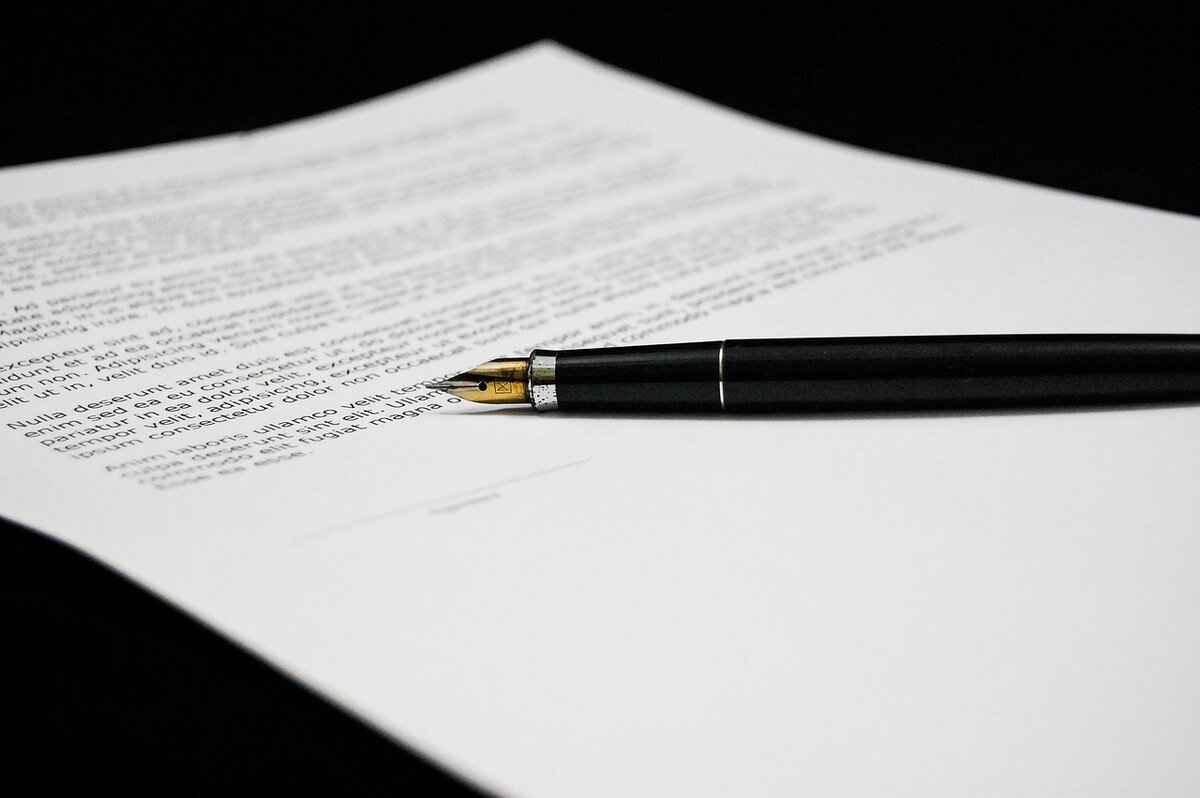This article delves into the vital steps and considerations necessary for drafting a legally binding lease agreement. It aims to ensure that both landlords and tenants are well-informed about their rights and obligations, thus fostering a transparent rental relationship.
Understanding Lease Agreements
A lease agreement serves as a legal contract between a landlord and a tenant, detailing the terms under which a property is rented. This document is crucial, as it establishes the framework of the rental relationship, including the responsibilities and rights of both parties.
Key Elements of a Lease Agreement
- Property Description: This section should provide a comprehensive description of the property, including its address, type (residential or commercial), and any unique features. Clarity in this area helps prevent misunderstandings.
- Duration of the Lease: Clearly stating whether the lease is month-to-month or fixed-term is essential in managing expectations regarding tenancy length.
- Rental Amount and Payment Terms: Including the rental amount, payment schedule, and any late fees is vital to avoid confusion. This section should also specify acceptable payment methods.
Rights and Responsibilities of Tenants and Landlords
A well-structured lease agreement should outline the rights of tenants, such as privacy and maintenance, and the responsibilities of landlords, including property upkeep and safety compliance. This mutual understanding promotes accountability and compliance with local laws.
Termination Clauses
Termination clauses are essential in detailing the conditions under which either party may end the lease. This section should specify notice requirements and acceptable grounds for termination, such as non-payment or lease violations.
Dispute Resolution Methods
Incorporating a dispute resolution clause can facilitate amicable conflict resolution. This may include methods like mediation or arbitration, which can prevent the need for legal action and foster a more cooperative relationship.
Compliance with Local Laws
Ensuring that the lease complies with local, state, and federal laws is paramount. This section should address specific legal requirements relevant to the property type, including fair housing regulations and local rental laws.
Finalizing the Lease Agreement
After drafting the lease, both parties should review it thoroughly. It’s advisable for each party to seek legal counsel to ensure that their interests are protected. The lease must be signed and dated by both parties to become legally binding.
Common Mistakes to Avoid
- Vague Language: Using ambiguous terms can lead to disputes. Precise language is essential for clear communication of terms.
- Ignoring Local Regulations: Failing to comply with local laws can invalidate the lease. Always ensure the lease adheres to applicable regulations.
In summary, drafting a legally binding lease agreement involves careful consideration of various elements, from property details to compliance with laws. By following these guidelines, landlords and tenants can establish a solid foundation for a positive rental relationship.

Understanding Lease Agreements
is crucial for both landlords and tenants as it sets the foundation for a successful rental relationship. A lease agreement is a legally binding contract that outlines the rights and responsibilities of both parties involved. By clearly defining the terms of rental, the lease serves as a safeguard against potential disputes and misunderstandings.
At its core, a lease agreement includes several key components that are essential for clarity and enforceability. These components ensure that both parties are on the same page regarding their obligations and expectations.
- Property Description: This section provides a detailed description of the property being rented, including the address, type of property (residential or commercial), and any specific features or amenities included in the lease.
- Duration of the Lease: It is important to specify the lease duration, whether it is a month-to-month arrangement or a fixed-term lease. This helps both parties manage their expectations regarding tenancy length.
- Rental Amount and Payment Terms: Clearly stating the rental amount, payment schedule, and any late fees is vital to avoid misunderstandings. This section should also specify acceptable payment methods.
- Rights and Responsibilities: A well-drafted lease should outline the rights and responsibilities of both landlords and tenants, ensuring mutual understanding and compliance with local laws.
- Termination Clauses: This section details the conditions under which either party may terminate the lease, including notice periods and acceptable reasons for termination.
- Dispute Resolution Methods: Including a clause for dispute resolution can help manage conflicts amicably, outlining methods such as mediation or arbitration before resorting to legal action.
- Compliance with Local Laws: Ensuring the lease complies with local, state, and federal laws is crucial. This section should address specific legal requirements relevant to the property type.
When drafting a lease agreement, it is essential to use clear and precise language. Ambiguities can lead to misunderstandings and disputes that could have been easily avoided. For instance, vague terms regarding the maintenance responsibilities of the landlord can create conflict if not clearly defined.
Additionally, landlords should be aware of their responsibilities, which include maintaining the property and ensuring it meets safety standards. Tenants, on the other hand, have rights regarding privacy and the habitability of the rental space. Clearly stating these rights and responsibilities in the lease agreement protects both parties and fosters a positive rental experience.
Another critical aspect of lease agreements is the inclusion of termination clauses. These clauses should specify how much notice must be given before terminating the lease, as well as acceptable grounds for termination, such as non-payment or lease violations. This clarity helps prevent abrupt evictions and ensures a fair process for both parties.
It is also advisable for both landlords and tenants to seek legal advice during the review process of the lease agreement. This can help identify potential issues before signing and ensure that the lease is enforceable and legally sound.
In conclusion, understanding lease agreements is essential for both landlords and tenants. By being aware of the key components and ensuring compliance with local laws, both parties can foster a positive rental relationship while protecting their rights and interests.

Key Elements of a Lease Agreement
are fundamental to establishing a clear understanding between landlords and tenants. A well-structured lease agreement not only protects the rights of both parties but also minimizes potential disputes. Below, we delve into the essential components that should be included in every lease agreement.
- Property Description: This section must provide a comprehensive description of the property being leased. It should include the full address, type of property (residential or commercial), and specific features such as square footage, number of bedrooms, and included appliances. A detailed property description ensures that both parties have a mutual understanding of what is being rented.
- Duration of the Lease: Clearly specifying the lease duration is critical. Whether it is a month-to-month agreement or a fixed-term lease, both parties should be aware of the expected length of tenancy. This clarity helps manage expectations and allows for better planning regarding occupancy and potential renewals.
- Rental Amount: The lease must clearly state the rental amount due each month. This section should detail whether the rent will remain constant or if there are any scheduled increases. Transparency regarding the rental amount is vital to prevent misunderstandings.
- Payment Terms: This includes the due date for rent payments, acceptable payment methods (such as checks, online transfers, etc.), and any late fees that may apply. Clearly articulating these terms helps both parties adhere to the agreed-upon schedule and reduces the risk of conflicts over payments.
- Security Deposits: Including information about the security deposit is essential. The lease should specify the amount required, the conditions under which it may be withheld, and the timeline for its return after the lease ends. This protects both landlords and tenants by setting clear expectations regarding the handling of the deposit.
- Termination Clauses: This section outlines the conditions under which either party can terminate the lease. It should specify notice requirements, acceptable grounds for termination, and any penalties that may apply for early termination. Clear termination clauses help avoid abrupt evictions and ensure a fair process for both parties.
- Rights and Responsibilities: A well-drafted lease agreement should clearly outline the rights and responsibilities of both landlords and tenants. This includes tenant rights to privacy and maintenance of the property, as well as landlord responsibilities for repairs and ensuring the property meets safety standards.
- Dispute Resolution Methods: It is beneficial to include a dispute resolution clause in the lease agreement. This section can outline methods such as mediation or arbitration to handle conflicts amicably before resorting to legal action. Understanding these methods can save both parties time and money.
- Compliance with Local Laws: Ensuring that the lease complies with local, state, and federal laws is crucial. This includes adhering to fair housing regulations and any specific rental laws applicable to the property type. Non-compliance can render the lease unenforceable.
Incorporating these key elements into a lease agreement not only fosters a positive rental relationship but also provides a framework for addressing issues that may arise during the tenancy. By ensuring that both parties are well-informed and agree to the terms outlined, landlords and tenants can work together harmoniously, reducing the likelihood of disputes and misunderstandings.
Property Description
When drafting a lease agreement, the is a crucial element that requires careful attention. A comprehensive description not only identifies the property in question but also sets clear expectations for both the landlord and the tenant. This section should encompass various aspects to ensure clarity and prevent misunderstandings.
- Property Address: The specific address of the property is essential. This includes the street number, street name, city, state, and zip code. A complete address helps avoid any confusion regarding the location of the rental unit.
- Type of Property: It is important to specify whether the property is residential, commercial, or industrial. Different types of properties come with varying legal implications and tenant rights. For instance, residential leases often have more stringent tenant protection laws compared to commercial leases.
- Square Footage: Including the total square footage of the property can provide prospective tenants with a clear understanding of the space they are renting. This is particularly important for commercial properties where space can significantly impact business operations.
- Specific Features and Amenities: Highlighting specific features such as the number of bedrooms and bathrooms, kitchen appliances, parking availability, and any included amenities like swimming pools or fitness centers is vital. Clearly listing these features helps to prevent disputes over what is included in the rental agreement.
- Condition of the Property: Describing the current condition of the property, including any recent renovations or repairs, can protect both parties. This ensures that tenants know what to expect and landlords have a record of the property’s state at the time of rental.
- Outdoor Spaces: If applicable, detail any outdoor areas that are part of the rental, such as gardens, balconies, or patios. Clarifying whether these spaces are shared or private can also help manage tenant expectations.
By providing a detailed property description, landlords can ensure that potential tenants are fully informed about what they are renting. This transparency not only fosters trust but also minimizes potential disputes that could arise from misunderstandings about the property.
Additionally, it is advisable to include photographs or diagrams of the property in the lease documentation. Visual aids can complement the written description and provide a clearer picture of what the tenant can expect.
In summary, a well-crafted property description is essential in a lease agreement. It serves as a foundational element that supports the entire contract, ensuring that both parties have a mutual understanding of the terms and conditions of the rental arrangement. By being thorough and precise, landlords and tenants can create a positive rental experience that is free from unnecessary complications.
Type of Property
When entering into a lease agreement, it is crucial to clearly identify the involved, whether it be residential or commercial. This distinction significantly influences the legal rights and obligations of both landlords and tenants. Each property type is governed by specific regulations and expectations that can affect everything from rental terms to maintenance responsibilities.
Residential Properties
- Typically include apartments, houses, and single-family homes.
- Subject to tenant protection laws that may limit rent increases and provide rights regarding eviction processes.
- Landlords are usually required to maintain the property in a habitable condition, addressing issues such as plumbing, heating, and safety standards.
Commercial Properties
- Include office spaces, retail locations, and industrial properties.
- Leases often involve longer terms and may include complex clauses related to business operations.
- Landlords may have fewer obligations concerning maintenance, depending on the lease structure, which can be negotiated between parties.
Understanding the differences between these property types is essential for both parties. For instance, residential leases often include laws that protect tenants from sudden evictions, while commercial leases might allow landlords more flexibility in terminating agreements.
Legal Considerations
When drafting a lease, it is imperative to include provisions that reflect the nature of the property. This means specifying whether the property is residential or commercial in the lease document, as this can influence:
- Lease Duration: Residential leases typically range from one year to month-to-month arrangements, while commercial leases can span several years.
- Rental Amount: The calculation of rent may differ based on property type, with commercial properties often having higher rental rates due to their potential for business income.
- Security Deposits: The amount and conditions for returning deposits can vary, with residential leases often capping the deposit at one or two months’ rent, while commercial leases may not have such limits.
Regulatory Compliance
Both landlords and tenants must be aware of the local laws that pertain to their specific property type. For instance:
- Residential properties are subject to fair housing regulations, which prohibit discrimination based on race, color, religion, sex, or national origin.
- Commercial properties may face different zoning laws and business regulations that affect how the space can be used.
Failure to comply with these regulations can lead to legal disputes, making it essential for both parties to understand their rights and obligations based on the property type.
Conclusion
In summary, clarifying the type of property at the outset of a lease agreement is vital for ensuring that both landlords and tenants are aware of their respective rights and responsibilities. Whether dealing with residential or commercial properties, understanding the legal landscape can help prevent misunderstandings and foster a positive rental experience.
Specific Features
within a lease agreement are crucial for establishing clear expectations between landlords and tenants. By explicitly detailing the amenities and appliances included in the rental property, both parties can avoid potential disputes and misunderstandings. This section serves as a reference point that can be revisited if disagreements arise, ensuring that everyone is on the same page regarding what is included in the rental.
When drafting this section, it is important to consider the following elements:
- Appliances: Clearly list all appliances that are part of the rental. This includes major items like refrigerators, stoves, washers, and dryers, as well as smaller appliances such as microwaves or dishwashers. Specify their condition, age, and whether they are maintained by the landlord.
- Amenities: Include details about any shared amenities available to tenants, such as pools, gyms, or laundry facilities. Clarifying access rights and maintenance responsibilities can prevent future conflicts.
- Furnishings: If the property is furnished, provide a detailed inventory of all included furniture. This should cover items like beds, sofas, tables, and chairs, along with their condition and any replacement policies.
- Utilities: Specify which utilities are included in the rent. This may encompass water, electricity, gas, internet, and trash removal services. Clearly stating which utilities the landlord is responsible for and which the tenant must cover can eliminate confusion.
- Parking: If parking is available, describe the parking arrangements, including the number of spaces, types (e.g., garage, driveway, street), and any associated costs.
- Outdoor Spaces: If the property includes a yard, balcony, or patio, outline the tenant’s rights and responsibilities regarding maintenance and use.
By providing a comprehensive list of specific features, landlords can significantly reduce the likelihood of disputes. For instance, if a tenant believes that a washer and dryer are included in the rental but the lease does not mention them, this can lead to frustration and potential legal issues. On the other hand, if the lease explicitly states that these appliances are not included, the tenant cannot claim otherwise.
Furthermore, it is advisable for landlords to conduct a walkthrough with the tenant before signing the lease. During this walkthrough, both parties can review the included features and agree on their condition. Documenting any pre-existing damages or issues with appliances or amenities can also help protect both parties. This can be done using a checklist or by taking photographs, which can be attached to the lease as an addendum.
Another important aspect to consider is the maintenance responsibilities associated with these features. The lease should clearly outline who is responsible for repairs and maintenance of the appliances and amenities. For example, if the landlord is responsible for maintaining the refrigerator but the tenant is responsible for the upkeep of the lawn, this should be clearly stated to avoid confusion.
In summary, detailing specific features in a lease agreement is not just a formality; it is a vital component of a successful rental relationship. By clearly listing appliances, amenities, and responsibilities, landlords and tenants can foster a transparent and cooperative environment, minimizing the chances of disputes and ensuring a smoother rental experience.
Duration of the Lease
When drafting a lease agreement, one of the most critical components to address is the . This section specifies the length of time the tenant is permitted to occupy the property and can significantly influence the expectations and responsibilities of both the landlord and the tenant.
The lease duration can take various forms, primarily categorized into two types: fixed-term leases and month-to-month leases. Understanding the differences between these options is essential for both parties.
- Fixed-Term Leases: A fixed-term lease is set for a specific duration, typically ranging from six months to a year. This type of lease provides stability for both parties, as the terms remain unchanged during the lease period. For tenants, this means they can plan their living arrangements without the worry of sudden changes. For landlords, it ensures consistent rental income and a long-term tenant.
- Month-to-Month Leases: A month-to-month lease offers more flexibility, allowing either party to terminate the agreement with a short notice period, often 30 days. This can be advantageous for tenants who may need to relocate quickly or landlords who want the option to adjust rental terms more frequently. However, this arrangement can lead to uncertainty, as tenants may be required to move on short notice.
Regardless of the type of lease, clarity in the agreement is paramount. The lease should explicitly state the start and end dates, along with any conditions for renewal or termination. This clarity helps both parties manage expectations regarding tenancy length and provides a clear framework for any potential disputes.
Furthermore, including provisions for what happens at the end of the lease term is crucial. For instance, if a fixed-term lease is approaching its end, the landlord and tenant should discuss whether the lease will be renewed and under what conditions. If a tenant wishes to stay beyond the initial term, the lease should outline the process for renewal, including any potential changes to rental terms.
It’s also important to address what happens if the tenant wishes to leave before the lease expires. The lease should specify any penalties or conditions that apply, such as notice periods or fees for early termination. This protects the landlord from unexpected vacancies while giving tenants clear guidelines on their rights and obligations.
In some cases, landlords may want to include a clause that allows for automatic renewal of the lease unless either party provides notice to terminate. This can streamline the process and reduce administrative burdens for both parties. However, tenants should be cautious and ensure they are comfortable with the terms before agreeing to such clauses.
In conclusion, the duration of the lease is a fundamental aspect that should be carefully considered and clearly articulated in the lease agreement. By specifying whether the lease is fixed-term or month-to-month, along with the conditions for renewal and termination, both landlords and tenants can foster a more transparent and harmonious rental relationship. This attention to detail not only helps in managing expectations but also minimizes the potential for conflicts during the tenancy.

Rental Amount and Payment Terms
When drafting a lease agreement, one of the most critical sections is the . Clearly outlining these details is essential to prevent any potential misunderstandings between landlords and tenants. A well-defined payment structure not only sets expectations but also minimizes conflicts that can arise from ambiguity.
First and foremost, it is imperative to specify the exact rental amount due each month. This figure should be clearly stated in both numeric and written form to avoid any misinterpretation. For instance, instead of simply stating “$1,200,” it should read as “One Thousand Two Hundred Dollars ($1,200).” Such clarity helps eliminate confusion and provides a solid reference point for both parties.
Additionally, the payment schedule should be explicitly defined. This includes the due date for rent payments—whether it is the first of the month or another agreed-upon date. It is also advisable to mention whether rent is due in advance or in arrears. For example, stating that rent is due on the first day of each month ensures both parties are aligned on when payments are expected.
Another important aspect to cover is the consequences of late payments. Including a clause about late fees can serve as a deterrent against tardiness. Specify the amount of the late fee and the grace period, if any, before the fee is applied. For example, a lease might state, “A late fee of $50 will be charged if rent is not received within five days of the due date.” This clarity helps both parties understand the repercussions of late payments.
Moreover, it is crucial to outline the acceptable payment methods. This section should specify whether payments can be made via check, online transfer, cash, or other forms. Providing multiple payment options can facilitate timely payments and reduce the likelihood of disputes. For instance, a clause might read, “Rent payments may be made via personal check, bank transfer, or through an online payment portal.” This flexibility can be beneficial for tenants who may prefer different payment methods.
In addition to the basic payment terms, landlords may also want to include a section on security deposits. This should detail the amount required, the conditions under which it will be held, and the process for its return at the end of the lease. Clear terms regarding the security deposit can help both parties avoid future conflicts over its return.
Furthermore, it is advisable to include a clause addressing non-payment of rent. This should specify the actions that may be taken in the event of non-payment, such as eviction procedures or legal actions. For example, a clause might state, “Failure to pay rent within ten days of the due date may result in legal action or eviction proceedings.” This provision serves to protect landlords while also informing tenants of the seriousness of timely payments.
Overall, the section of a lease agreement is vital for establishing a clear understanding between landlords and tenants. By clearly stating the rent amount, payment schedule, late fees, and acceptable payment methods, both parties can navigate their rental relationship with confidence and clarity. Ensuring that these terms are well-defined not only protects the interests of both parties but also fosters a positive rental experience.
Security Deposits
play a crucial role in the rental process, serving as a financial safeguard for landlords while providing tenants with a sense of security regarding their living conditions. Understanding the intricacies of security deposits is essential for both parties involved in a lease agreement.
Typically, a security deposit is a sum of money that a tenant pays to a landlord before moving into a rental property. This amount is usually equivalent to one month’s rent, although it can vary based on local laws and the landlord’s policies. The primary purpose of a security deposit is to cover potential damages to the property, unpaid rent, or other breaches of the lease agreement.
When determining the amount of the security deposit, it is crucial for landlords to adhere to local regulations. Many states have specific laws that limit the maximum amount a landlord can charge for a security deposit, often capping it at one or two months’ rent. Tenants should be aware of these regulations to ensure they are not overcharged.
Equally important are the conditions for the return of the security deposit. A well-drafted lease agreement should clearly outline the circumstances under which the deposit will be returned to the tenant. Common conditions include:
- The property is returned in the same condition as it was received, barring normal wear and tear.
- All rent payments are up to date.
- Any necessary cleaning or repairs have been completed.
Landlords are typically required to return the security deposit within a specific timeframe after the lease ends, often ranging from 14 to 60 days, depending on state laws. Failure to comply with these regulations can lead to legal disputes and potential penalties for landlords.
To prevent misunderstandings, both parties should document the condition of the property at the start of the lease. This can include a detailed move-in checklist that notes any existing damages or issues. Taking photographs can also serve as valuable evidence should disputes arise regarding the return of the security deposit.
Effective communication between landlords and tenants is vital. If there are any issues with the property that may affect the return of the security deposit, tenants should notify landlords promptly. This proactive approach can help resolve issues before they escalate, ensuring a smoother transition at the end of the lease.
In the unfortunate event of a dispute over the security deposit, both parties should refer to the terms outlined in the lease agreement. Many states encourage mediation or alternative dispute resolution methods before escalating the matter to court. This process can save both time and money, fostering a more amicable resolution.
Landlords must also be aware of the legal implications surrounding security deposits. Some states require landlords to place security deposits in a separate, interest-bearing account. Additionally, landlords are often obligated to provide tenants with a written notice detailing any deductions made from the security deposit, including receipts for repairs or cleaning services.
Understanding the laws governing security deposits is essential for both landlords and tenants. By clearly outlining the amount, conditions for return, and procedures for handling disputes in the lease agreement, both parties can protect their interests and foster a positive rental experience.
In summary, are a fundamental aspect of lease agreements that require careful consideration. By establishing clear expectations and adhering to legal requirements, landlords and tenants can minimize conflicts and ensure a fair rental relationship.
Payment Methods
play a critical role in lease agreements, as they establish how and when rent is to be paid. Clearly defining accepted payment methods not only enhances the efficiency of the payment process but also significantly minimizes the potential for disputes between landlords and tenants. Understanding the various options available and their implications can lead to a smoother rental experience for both parties.
When drafting a lease agreement, it is essential to specify the accepted payment methods. Common options include:
- Checks: Traditional checks remain a popular choice for many landlords. They provide a physical record of payment, which can be beneficial for both parties.
- Online Transfers: With the rise of digital banking, online transfers have become increasingly common. They offer convenience and speed, allowing tenants to make payments from anywhere at any time.
- Credit/Debit Cards: Accepting credit or debit card payments can attract more tenants who prefer this method for its ease and the ability to earn rewards.
- Cash Payments: While cash is a straightforward option, it is less advisable due to the lack of a paper trail, which could lead to disputes regarding payment verification.
In addition to specifying the methods of payment, it is crucial to outline the payment schedule. This includes the due date for rent payments, whether they are monthly, bi-weekly, or another frequency. Establishing a clear timeline helps both landlords and tenants manage their finances effectively and avoid late fees.
Moreover, it is advisable to include details regarding late payment penalties. Stipulating a grace period, if applicable, and the consequences of late payments can further promote timely transactions. For instance, a common practice is to impose a late fee after a certain number of days past the due date, which serves as an incentive for prompt payment.
Another important aspect to consider is the receipt of payment. Landlords should provide tenants with written confirmation of payment, regardless of the method used. This receipt serves as proof of payment and can help resolve any future disputes regarding payment history.
Additionally, the lease agreement should address returned payments, such as bounced checks. Clear guidelines on how these situations will be handled, including any fees incurred, can prevent misunderstandings and ensure both parties are aware of their responsibilities.
In recent years, technology has transformed the way payments are processed. Many landlords are now using property management software that facilitates online rent collection and automates reminders for upcoming payments. This not only streamlines the payment process but also enhances communication between landlords and tenants.
When discussing payment methods, it is also essential to consider security. Tenants should feel confident that their payment information is secure, especially when using online platforms. Landlords should choose payment methods that offer robust security measures to protect sensitive financial data.
In summary, specifying accepted payment methods in a lease agreement is crucial for a seamless rental experience. By clearly outlining the payment options, schedules, penalties for late payments, and methods for confirming payment, both landlords and tenants can foster a positive and transparent relationship. This proactive approach not only streamlines the payment process but also helps mitigate potential conflicts, ensuring that both parties are on the same page regarding financial obligations.

Rights and Responsibilities of Tenants and Landlords
The relationship between tenants and landlords is governed by a lease agreement that outlines the rights and responsibilities of both parties. Understanding these elements is crucial for fostering a positive and compliant rental experience. This section delves into the essential rights of tenants and the corresponding responsibilities of landlords, ensuring that both parties are aware of their obligations under the law.
Tenants possess several rights designed to protect them during their rental period. These rights include:
- Right to Privacy: Tenants have the right to enjoy their rented space without unnecessary interference from the landlord. Landlords must provide notice before entering the property, except in emergencies.
- Right to Safe Living Conditions: Tenants are entitled to a habitable living environment. This includes functioning utilities, proper sanitation, and structural safety.
- Right to Repairs: Tenants can request necessary repairs and maintenance. Landlords are obligated to address these requests promptly to maintain the property’s condition.
- Right to Fair Treatment: Tenants should not face discrimination based on race, gender, religion, or other protected characteristics. Fair housing laws safeguard against such practices.
Landlords have specific obligations to ensure that the property is safe and habitable. Key responsibilities include:
- Maintenance of Property: Landlords must keep the property in good condition, addressing repairs and maintenance issues as they arise.
- Compliance with Health and Safety Codes: Landlords are required to adhere to local health and safety regulations, ensuring that the property meets all legal standards.
- Return of Security Deposits: Upon termination of the lease, landlords must return security deposits within the timeframe specified by law, minus any lawful deductions for damages or unpaid rent.
- Notification of Lease Changes: Landlords should inform tenants of any changes to lease terms or rent increases, providing adequate notice as required by law.
A well-drafted lease agreement serves as a foundation for mutual understanding between tenants and landlords. It should clearly outline the rights and responsibilities of both parties to prevent disputes and ensure compliance with local laws. By addressing key issues such as maintenance responsibilities, privacy rights, and termination procedures, the lease can foster a cooperative relationship.
Both tenants and landlords must be aware of local laws governing rental agreements. These regulations can vary significantly by jurisdiction and may include:
- Rent Control Measures: Some areas have laws limiting rent increases, which landlords must comply with.
- Eviction Procedures: Local laws dictate the process landlords must follow to evict tenants, ensuring that proper legal steps are taken.
- Discrimination Laws: Fair housing laws protect tenants from discrimination, requiring landlords to treat all applicants and tenants fairly.
Understanding the rights and responsibilities of tenants and landlords is crucial for a harmonious rental relationship. By ensuring that lease agreements are clear and compliant with local laws, both parties can protect their interests and foster a positive living environment.
Tenant Rights
are fundamental aspects of rental agreements that protect individuals who rent properties. Understanding these rights is crucial for tenants to ensure they are treated fairly and equitably. This section delves into the essential rights tenants possess regarding privacy, maintenance, and habitability.
First and foremost, tenants have a right to privacy. This means that landlords cannot enter a rented property without providing adequate notice, typically 24 to 48 hours, unless there is an emergency. This right is designed to protect tenants from unwarranted intrusions and ensures they can enjoy their home without undue interference. Landlords must respect this right, as violations can lead to legal consequences.
Next, the right to maintenance is a critical aspect of tenant rights. Tenants are entitled to live in a property that is safe and well-maintained. This includes timely repairs of essential services such as heating, plumbing, and electrical systems. If a landlord fails to address maintenance issues, tenants have the right to request repairs formally. In some jurisdictions, if landlords neglect their responsibilities, tenants may have the option to withhold rent or even terminate the lease.
Additionally, tenants have a right to habitability. This legal doctrine requires that rental properties meet basic living standards. This includes adequate heating, plumbing, and protection from pests and mold. If a property is deemed uninhabitable, tenants may have the right to terminate the lease or seek legal remedies. It is essential for tenants to document any issues and communicate them to their landlords promptly.
To further clarify these rights, here is a table summarizing key tenant rights:
| Tenant Right | Description |
|---|---|
| Privacy | Landlords must provide notice before entering the rental property. |
| Maintenance | Tenants are entitled to timely repairs and maintenance of essential services. |
| Habitability | Rental properties must meet basic living standards. |
Moreover, tenants should be aware of their rights under local and federal laws, such as the Fair Housing Act, which prohibits discrimination based on race, color, religion, sex, national origin, familial status, or disability. Understanding these protections is vital for tenants to ensure they are not subjected to unfair treatment.
In addition to the rights mentioned, tenants also have the right to security deposits. Landlords must provide clear information about the amount, conditions for return, and any deductions that may be made. This transparency helps prevent disputes when tenants move out.
It is also essential for tenants to understand their rights regarding retaliation. If a tenant exercises their legal rights, such as reporting unsafe living conditions, landlords cannot retaliate by increasing rent or terminating the lease. Knowing this can empower tenants to advocate for their rights without fear of retribution.
In conclusion, understanding tenant rights regarding privacy, maintenance, and habitability is vital for fostering a positive rental experience. Tenants should familiarize themselves with these rights and stay informed about local laws to protect themselves effectively. By doing so, they can ensure their living conditions are safe, secure, and respectful of their dignity as renters.
Landlord Responsibilities
When it comes to rental agreements, are a critical aspect that must be clearly defined to ensure a smooth tenancy. Understanding these responsibilities not only protects the tenant’s rights but also helps landlords maintain their property effectively and comply with legal standards. This article delves into the essential duties of landlords, emphasizing the importance of maintaining properties and adhering to safety regulations.
Landlords are legally obligated to provide a safe and habitable living environment for their tenants. This includes ensuring that the property meets all safety standards and is in good repair. By clearly defining these responsibilities in the lease agreement, landlords can promote accountability and minimize potential disputes.
Regular maintenance is a cornerstone of a landlord’s responsibilities. This encompasses a wide range of tasks, such as:
- Conducting regular inspections to identify any issues.
- Addressing repairs promptly, including plumbing, electrical, and structural concerns.
- Maintaining common areas in multi-unit properties to ensure they are clean and safe.
By committing to ongoing maintenance, landlords not only enhance tenant satisfaction but also protect their investment over the long term.
Safety is paramount in rental properties. Landlords must ensure compliance with local building codes and safety regulations, which may include:
- Installing smoke detectors and carbon monoxide alarms.
- Providing adequate lighting in common areas and ensuring exits are clear and accessible.
- Addressing any potential hazards, such as mold, lead paint, or pest infestations.
Failure to meet these safety standards can lead to legal repercussions and liability for landlords, making it essential to stay informed about applicable regulations.
Effective communication is vital in the landlord-tenant relationship. Landlords should:
- Provide tenants with clear instructions on how to report maintenance issues.
- Keep tenants informed about upcoming inspections or necessary repairs.
- Be responsive to tenant inquiries and concerns to foster a positive living environment.
Open lines of communication can help prevent misunderstandings and build trust between landlords and tenants.
One of the most effective ways to clarify landlord responsibilities is through the lease agreement. This document should explicitly outline:
- The landlord’s duty to maintain the property.
- The timeline for addressing maintenance requests.
- Any specific safety measures the landlord is responsible for implementing.
By defining these responsibilities in writing, both parties have a clear understanding of their obligations, which can help mitigate disputes down the line.
Landlords must stay updated on local, state, and federal laws that govern rental properties. This includes understanding fair housing regulations and ensuring that the lease complies with all relevant legal requirements. Regular training or consultation with a legal expert can help landlords navigate these complexities and avoid potential pitfalls.
In summary, landlords have a significant responsibility to maintain their properties and ensure safety standards are met. By clearly defining these duties in the lease agreement, landlords can promote accountability and foster a positive rental experience. Understanding and fulfilling these responsibilities not only protects tenants but also enhances the longevity and value of the rental property.

Termination Clauses
are a crucial component of any lease agreement, providing clarity and protection for both landlords and tenants. These clauses specify the conditions under which either party may terminate the lease, ensuring that there is mutual understanding regarding the end of the tenancy. The importance of these clauses cannot be overstated, as they help prevent disputes and outline the rights and responsibilities of both parties.
Termination clauses serve as a safeguard for both landlords and tenants. They outline the necessary steps to take when either party wishes to end the lease, thus reducing the likelihood of misunderstandings. By explicitly stating the conditions for termination, both parties are aware of their rights, which can lead to a smoother transition when the lease comes to an end.
One of the key elements of a termination clause is the notice period. This section should clearly specify how much notice must be given before a lease can be terminated. Common notice periods range from 30 to 60 days, but this can vary based on local laws and the specific terms of the lease. Adequate notice allows both parties to prepare for the change, whether it’s finding a new tenant or making arrangements to relocate.
Termination clauses should also outline the acceptable grounds for termination. This may include reasons such as:
- Non-payment of rent
- Violation of lease terms
- Property damage
- Illegal activities on the premises
By listing these grounds, landlords can ensure that tenants understand the behaviors that could lead to lease termination. Similarly, tenants should be aware of their rights, such as being able to contest a termination if they believe it is unjustified.
In some cases, both parties may agree to terminate the lease early. This should also be addressed in the termination clause. A mutual termination agreement allows both the landlord and tenant to come to a consensus on ending the lease without any penalties, provided all terms are met. Such agreements can be beneficial in situations where circumstances change unexpectedly for either party.
It is essential to ensure that termination clauses comply with local laws and regulations. Different jurisdictions may have specific requirements regarding notice periods and grounds for termination. Failing to adhere to these legal standards can result in the lease being deemed unenforceable, which can lead to significant complications for both parties involved.
To avoid potential disputes, it is advisable to document all termination procedures in writing. This includes any communication regarding the termination, such as emails or letters. Keeping a record of these interactions can provide evidence should any disagreements arise later on.
Termination clauses are a vital part of any lease agreement, providing clarity and protection for both landlords and tenants. By understanding the importance of notice requirements, acceptable grounds for termination, and the need for compliance with local laws, both parties can navigate the end of a lease with confidence. A well-drafted termination clause not only helps to prevent disputes but also fosters a more positive rental experience overall.
Notice Requirements
are a critical component of lease agreements, serving to protect both landlords and tenants by establishing clear guidelines for terminating a lease. Specifying the amount of notice required before termination is essential to prevent abrupt evictions and to ensure a fair and transparent process. This section of the lease agreement not only clarifies the expectations but also promotes a harmonious relationship between the parties involved.
In many jurisdictions, the law mandates a minimum notice period that landlords must provide tenants prior to eviction. This period can vary significantly based on local regulations, the reason for termination, and the type of lease agreement in place. For instance, a month-to-month lease may require a notice of 30 days, while a fixed-term lease might have different stipulations depending on the circumstances surrounding the termination.
| Type of Lease | Notice Period | Common Reasons for Termination |
|---|---|---|
| Month-to-Month | 30 days | Non-payment, property sale, personal use |
| Fixed-Term | Varies (often 30-60 days) | Lease violations, non-renewal |
Providing a clear notice requirement in the lease agreement helps to mitigate misunderstandings and disputes. For example, if a landlord wishes to terminate a lease due to non-payment of rent, they must adhere to the specified notice period. This allows tenants the opportunity to rectify the situation, thus fostering a sense of fairness and responsibility.
Moreover, it is important to detail the method of delivering the notice. Acceptable methods may include personal delivery, certified mail, or electronic communication, depending on what both parties agree upon in the lease. This specification ensures that both parties are aware of the communication methods and can effectively receive and respond to notices.
In addition to notice periods, the lease should outline acceptable grounds for termination, which may include:
- Non-Payment of Rent: Failure to pay rent on time is a common ground for eviction.
- Lease Violations: Breaching terms of the lease, such as unauthorized pets or excessive noise.
- Property Damage: Significant damage to the property beyond normal wear and tear.
By clearly delineating the grounds for termination and the associated notice requirements, both landlords and tenants can better navigate the complexities of lease agreements. This clarity not only aids in maintaining a positive rental relationship but also ensures compliance with local laws and regulations.
Furthermore, landlords should be aware that some states have specific laws protecting tenants from retaliatory evictions, which can occur if a tenant asserts their rights. Therefore, it is crucial for landlords to act in good faith and provide proper notice according to the terms outlined in the lease and applicable laws.
In conclusion, notice requirements are a fundamental aspect of lease agreements that serve to protect the rights of both landlords and tenants. By specifying the notice period, method of delivery, and grounds for termination, all parties can engage in a fair and transparent rental process. This not only helps prevent abrupt evictions but also fosters a respectful and cooperative rental environment.
Grounds for Termination
are a crucial aspect of any lease agreement, as they define the circumstances under which either party may legally terminate the lease. Understanding these grounds is essential for both landlords and tenants to protect their rights and ensure a smooth rental experience.
In a lease agreement, it is important to explicitly list the acceptable grounds for termination. This clarity helps prevent misunderstandings and disputes that may arise during the tenancy. The following are common grounds for termination:
- Non-Payment of Rent: One of the most common reasons for lease termination is the tenant’s failure to pay rent on time. Most leases specify a grace period, after which the landlord may initiate termination proceedings.
- Lease Violations: Violating any terms of the lease, such as unauthorized pets or subletting without permission, can be grounds for termination. Landlords should ensure that these violations are clearly defined in the lease.
- Property Damage: Significant damage to the property caused by the tenant can justify termination. This includes damage beyond normal wear and tear, which can lead to costly repairs.
- Illegal Activities: Engaging in illegal activities on the property, such as drug use or distribution, provides grounds for immediate termination. Landlords have a legal obligation to ensure a safe environment for all tenants.
- Failure to Maintain the Property: Tenants are often required to keep the property in good condition. If a tenant fails to do so, the landlord may have grounds to terminate the lease.
- Expiration of Lease: When a lease reaches its expiration date, either party may choose not to renew it, thereby terminating the agreement. It’s essential to outline the notice period required for non-renewal.
Each of these grounds should be accompanied by a clear explanation of the process for termination. For instance, landlords should specify the notice requirements—how much notice must be given before termination can take effect. Typically, this notice period varies by state law and the specific terms outlined in the lease.
Additionally, landlords should consider including a clause that allows for curing violations. This means that tenants may have the opportunity to correct a lease violation before termination is finalized. This approach not only fosters goodwill but also allows tenants the chance to rectify any issues without losing their housing.
It’s also important for both parties to understand the implications of terminating a lease. For landlords, improper termination can lead to legal disputes and potential financial losses. For tenants, being evicted can have long-term consequences, affecting future rental opportunities and credit scores.
In summary, clearly defining the in a lease agreement is vital for both landlords and tenants. This not only provides a framework for managing disputes but also ensures compliance with legal standards. By outlining specific grounds and procedures, both parties can foster a transparent and fair rental relationship.

Dispute Resolution Methods
In the realm of rental agreements, conflicts can arise for various reasons, from misunderstandings about lease terms to disputes over property maintenance. To mitigate these issues, it is essential to incorporate a dispute resolution clause within the lease agreement. This clause serves as a roadmap for addressing conflicts, promoting amicable resolutions before escalating to legal proceedings.
By specifying methods such as mediation and arbitration, landlords and tenants can establish a framework for resolving disputes in a structured manner. Both mediation and arbitration offer distinct advantages, which can be beneficial in maintaining a positive landlord-tenant relationship.
Mediation involves a neutral third party who facilitates discussions between the disputing parties. The mediator’s role is to help both sides communicate effectively, identify their underlying interests, and explore potential solutions. This process is often less formal and can be quicker and more cost-effective than traditional legal routes.
- Benefits of Mediation:
- Cost-effective: Generally, mediation requires lower fees than litigation.
- Time-efficient: Mediation sessions can often be scheduled promptly.
- Preserves relationships: The collaborative nature of mediation can help maintain a positive relationship between landlords and tenants.
In contrast, arbitration involves a more formal process where an arbitrator listens to both parties and makes a binding decision. This method is akin to a simplified court trial but is typically less rigid in terms of procedures and rules. The decision made by the arbitrator is usually final and enforceable by law.
- Advantages of Arbitration:
- Finality: The binding nature of arbitration means that disputes are resolved without the possibility of appeal.
- Expertise: Arbitrators often have specialized knowledge in real estate or landlord-tenant law, which can lead to more informed decisions.
- Confidentiality: Unlike court proceedings, arbitration is generally private, protecting the parties’ reputations.
When drafting a dispute resolution clause, landlords and tenants should consider their preferences and the nature of potential disputes. Including clear guidelines on which method to pursue first can streamline the resolution process. For example, a lease might stipulate that parties must first attempt mediation before moving to arbitration.
While mediation and arbitration are effective ways to resolve conflicts, it is also important to acknowledge the potential for legal action. A well-structured lease agreement should outline the steps to take if disputes cannot be resolved through alternative methods. This section can include:
- Notice requirements: Specify how much notice must be given before initiating legal proceedings.
- Jurisdiction: Determine which court has authority in case of legal disputes.
Understanding the legal framework surrounding dispute resolution is crucial for both landlords and tenants. It is advisable for both parties to seek legal counsel when drafting or reviewing the lease agreement to ensure that their rights are protected and that the dispute resolution methods align with local laws.
In conclusion, incorporating a comprehensive dispute resolution clause in a lease agreement is a proactive step towards managing conflicts. By clearly outlining the processes of mediation and arbitration, landlords and tenants can foster an environment of cooperation and understanding, ultimately leading to a more harmonious rental experience.
Mediation vs. Arbitration
When it comes to resolving disputes, understanding the differences between mediation and arbitration is crucial for parties involved. Both are alternative dispute resolution (ADR) methods that offer distinct processes and outcomes, allowing individuals and businesses to settle conflicts without resorting to litigation.
Mediation is a voluntary process where a neutral third party, known as the mediator, facilitates communication between disputing parties. The goal is to help them reach a mutually acceptable agreement. Here are some key aspects of mediation:
- Confidentiality: Mediation sessions are private, and anything discussed typically cannot be used in court.
- Control: Parties maintain control over the outcome, as they are the ones who decide whether to accept any proposed solutions.
- Informal Process: The atmosphere is less formal than that of arbitration or court, which can reduce tension and promote open dialogue.
Mediation is particularly effective for disputes involving ongoing relationships, such as family matters or business partnerships, as it fosters collaboration and communication.
In contrast, arbitration involves a neutral third party, the arbitrator, who listens to both sides and makes a binding decision. This process is more structured and resembles a court proceeding. Key features of arbitration include:
- Binding Decisions: The arbitrator’s decision is usually final and enforceable in court, limiting the options for appeals.
- Less Control: Parties have less control over the outcome since the arbitrator makes the final decision.
- Formal Procedures: Arbitration follows specific rules and procedures, which can make it more complex and time-consuming compared to mediation.
Arbitration is often preferred in commercial disputes or cases where parties seek a definitive resolution, as it provides a clear end to the conflict.
Deciding whether to pursue mediation or arbitration depends on several factors:
- Nature of the Dispute: If preserving relationships is important, mediation may be the better choice.
- Desired Outcome: For a binding resolution, arbitration is more suitable.
- Cost and Time: Mediation is generally less expensive and quicker than arbitration.
Parties should evaluate their specific circumstances, including the complexity of the dispute and their willingness to negotiate, before making a decision.
Both mediation and arbitration are governed by various laws, which can vary by state. The Federal Arbitration Act provides a legal framework for arbitration, ensuring that agreements to arbitrate are enforceable. Mediation, while not as formalized, is also supported by state laws that encourage its use in resolving disputes.
In conclusion, understanding the differences between mediation and arbitration is essential for parties seeking to resolve conflicts effectively. By considering the nature of the dispute, desired outcomes, and the legal framework, individuals and organizations can choose the most appropriate method for their situation. This informed decision-making can lead to more satisfactory resolutions and preserve important relationships.
Legal Action
In the realm of leasing, the importance of having a comprehensive understanding of the legal action process cannot be overstated. While it is always preferable to resolve disputes amicably, it is crucial to prepare for potential conflicts by outlining the process for legal action in the lease agreement. This proactive approach serves to protect both landlords and tenants, ensuring that each party is aware of their rights and responsibilities should a dispute arise.
Understanding the Need for Legal Action Clauses
Legal action clauses in lease agreements act as a safeguard, providing clarity on how disputes will be handled. By specifying the procedures for initiating legal action, both parties can avoid confusion and potential escalation of conflicts. This section of the lease should detail the circumstances that may lead to legal action, such as non-payment of rent, property damage, or violation of lease terms.
Steps to Initiate Legal Action
- Notice Requirements: Before any legal action can commence, the party seeking resolution must typically provide written notice to the other party. This notice should clearly outline the nature of the dispute and any actions required to resolve it.
- Timeframes: The lease agreement should specify the timeframe within which the aggrieved party must respond to the notice. This ensures that both parties are held accountable and that issues are addressed promptly.
- Documentation: Keeping thorough records is essential. Both landlords and tenants should maintain documentation related to the lease, including payment records, correspondence, and any notices sent. This information can be critical if the dispute escalates to legal action.
Alternative Dispute Resolution (ADR)
Before resorting to legal action, many lease agreements include clauses that mandate alternative dispute resolution methods, such as mediation or arbitration. These methods can provide a more cost-effective and timely resolution to disputes. Mediation involves a neutral third party who facilitates discussions between the parties, while arbitration entails a binding decision made by an arbitrator. Including these options in the lease can encourage parties to resolve conflicts without the need for litigation.
Legal Jurisdiction
It is also important to define the legal jurisdiction in which any disputes will be resolved. This means specifying which state or local laws will govern the lease agreement and where legal proceedings must take place. This clarity helps both parties understand where to file claims and what legal standards will apply.
Potential Consequences of Legal Action
Both landlords and tenants should be aware of the potential consequences of pursuing legal action. For landlords, this may include the cost of legal fees, potential damage to their reputation, and the risk of losing a tenant. For tenants, legal action can result in eviction, financial penalties, and a negative impact on their rental history. Therefore, it is in the best interest of both parties to explore all available options for resolution before escalating to legal proceedings.
Final Thoughts
In conclusion, while it is always best to strive for amicable resolutions, having a clearly outlined process for legal action in the lease agreement is essential. This not only prepares both parties for potential conflicts but also fosters a transparent and respectful landlord-tenant relationship. By understanding the legal frameworks, documenting interactions, and considering alternative dispute resolution methods, both landlords and tenants can navigate disputes more effectively, ultimately leading to a more harmonious rental experience.

Compliance with Local Laws
When drafting a lease agreement, compliance with local, state, and federal laws is not just important; it is essential. This section of the lease must address specific legal requirements relevant to the property type, ensuring that both landlords and tenants are protected and informed.
Understanding the legal landscape is crucial for both parties. Local laws can vary significantly from one jurisdiction to another. For instance, cities may have specific regulations regarding rent control, tenant rights, and eviction processes. It is imperative to research and incorporate these local ordinances into the lease to avoid potential disputes or legal challenges.
In addition to local regulations, state laws govern broader aspects of rental agreements. These laws typically cover areas such as security deposits, lease termination, and tenant privacy rights. For example, some states have strict limits on the amount a landlord can charge for a security deposit, while others may dictate the timeframe for returning the deposit after a tenant moves out. Understanding these nuances helps in crafting a lease that is both fair and compliant.
Furthermore, federal laws such as the Fair Housing Act prohibit discrimination based on race, color, religion, sex, national origin, familial status, or disability. It is crucial for landlords to incorporate these protections into their lease agreements to ensure they are not inadvertently violating federal regulations. This not only protects the tenants but also shields landlords from potential lawsuits.
| Legal Consideration | Description |
|---|---|
| Local Laws | Regulations specific to the city or county, including zoning laws and tenant protections. |
| State Laws | Broader regulations that govern rental agreements, such as security deposit limits and eviction processes. |
| Federal Laws | Nationwide laws that prevent discrimination and ensure equal housing opportunities. |
Additionally, landlords should be aware of any specific legal requirements that pertain to the property type. For instance, commercial leases may have different stipulations compared to residential leases. Commercial properties often involve more complex regulations, including compliance with health and safety codes, which must be clearly outlined in the lease agreement.
It is also advisable for landlords to include a clause in the lease that states the agreement will be governed by applicable laws. This clause can outline the process for resolving disputes that may arise due to legal compliance issues. By doing so, both parties have a clear understanding of their rights and obligations under the law.
In conclusion, ensuring compliance with local, state, and federal laws is a critical aspect of drafting a lease agreement. By carefully considering the specific legal requirements relevant to the property type and incorporating them into the lease, landlords can create a transparent and enforceable agreement that protects both their interests and those of their tenants. This diligence not only fosters a positive rental relationship but also minimizes the risk of legal complications down the road.
Fair Housing Regulations
play a critical role in promoting equality and preventing discrimination in housing. These laws are designed to protect individuals from unfair treatment based on certain protected characteristics. Understanding these regulations is essential for both landlords and tenants to ensure compliance and foster a fair rental environment.
The Fair Housing Act, enacted in 1968 and amended in 1988, prohibits discrimination in housing based on race, color, national origin, religion, sex, familial status, and disability. This federal law applies to most housing transactions, including the sale and rental of homes, and it is essential for landlords to familiarize themselves with these provisions to avoid potential legal issues.
- Protected Classes: The Fair Housing Act identifies specific groups that are protected from discrimination. These include:
- Race
- Color
- National Origin
- Religion
- Sex
- Familial Status (e.g., presence of children under 18)
- Disability
Landlords must ensure that their leasing practices, advertising, and tenant selection processes do not discriminate against any of these protected classes. This includes avoiding biased language in advertisements and treating all applicants equally during the screening process.
Discrimination can take many forms, including:
- Refusing to Rent: Denying housing to individuals based on their protected characteristics.
- Different Terms and Conditions: Imposing different rental terms or conditions based on an applicant’s protected status.
- Harassment: Creating a hostile environment for tenants based on their protected characteristics.
It is crucial for landlords to recognize these practices to avoid legal repercussions. Training staff and implementing fair housing policies can significantly reduce the risk of discrimination claims.
To ensure compliance with fair housing laws, landlords should adopt the following best practices:
- Educate Yourself and Your Staff: Regular training on fair housing laws can help staff understand their responsibilities and the importance of non-discriminatory practices.
- Implement Fair Housing Policies: Establish clear policies that promote equal treatment and outline procedures for handling complaints of discrimination.
- Maintain Accurate Records: Keep detailed records of tenant applications, communications, and decisions made during the rental process to demonstrate compliance if needed.
Additionally, landlords should stay informed about state and local fair housing laws, as these can provide even broader protections than federal laws. Some jurisdictions may include additional protected classes, such as sexual orientation or gender identity.
If a tenant believes they have experienced discrimination, they have several options for reporting it:
- File a Complaint: Tenants can file a complaint with the U.S. Department of Housing and Urban Development (HUD) or their local fair housing agency.
- Seek Legal Assistance: Consulting with an attorney who specializes in housing law can provide guidance on the best course of action.
Understanding and adhering to fair housing regulations is not only a legal obligation but also a moral one that fosters a more inclusive community. By preventing discrimination and ensuring compliance, landlords can contribute to a fair housing market where all individuals have equal access to housing opportunities.
Local Rental Laws
When it comes to , it is essential for both landlords and tenants to understand that these regulations can vary significantly from one jurisdiction to another. Each state, and often individual cities or counties, may have unique statutes and ordinances governing rental agreements, tenant rights, and landlord responsibilities. Therefore, conducting thorough research into these laws is not just recommended; it is critical for ensuring that any lease agreement is both enforceable and legally sound.
Understanding the specific applicable to your area can help prevent misunderstandings and disputes between landlords and tenants. Here are several key points to consider:
- State-Specific Regulations: Each state has its own set of laws that govern leasing practices. For instance, some states have specific requirements regarding security deposits, including how much can be charged and the timeframe for returning them after a tenant moves out.
- Local Ordinances: In addition to state laws, many cities implement their own rental regulations. For example, cities like San Francisco and New York have rent control laws that limit how much rent can be increased annually.
- Tenant Rights: Local laws often outline specific rights for tenants, such as the right to a habitable living environment, privacy rights, and protection against retaliatory evictions. Understanding these rights can empower tenants and help them advocate for themselves.
- Landlord Obligations: Local regulations may also detail the obligations of landlords, such as maintaining the property and adhering to health and safety codes. Failure to comply with these regulations can result in legal repercussions for landlords.
To ensure compliance with , landlords should consider the following steps:
- Research Local Laws: Utilize online resources, local government websites, or legal professionals to gather information about the rental laws specific to your area.
- Consult Legal Experts: Engaging with a real estate attorney who specializes in landlord-tenant law can provide invaluable insights and help draft lease agreements that comply with local regulations.
- Stay Updated: Laws can change frequently, so it is crucial to stay informed about any updates to local rental regulations that may affect your lease agreements.
For tenants, understanding local rental laws can provide a sense of security and knowledge about their rights. They should:
- Know Their Rights: Familiarize themselves with local laws regarding eviction processes, rent increases, and maintenance responsibilities.
- Document Everything: Keeping thorough records of all communications with landlords, including requests for repairs or issues with the property, can be beneficial if disputes arise.
- Seek Legal Advice: If tenants believe their rights are being violated, consulting with a tenant advocacy group or attorney can help them understand their options.
In summary, the importance of researching and understanding cannot be overstated. Both landlords and tenants benefit from being informed about their rights and responsibilities, which fosters a more harmonious rental experience. By ensuring that lease agreements are compliant with applicable laws, both parties can protect themselves and avoid potential legal disputes.

Finalizing the Lease Agreement
Finalizing a lease agreement is a critical step in the rental process. It marks the transition from negotiation to commitment, ensuring both parties are aligned on the terms of the rental relationship. This phase requires careful attention to detail to avoid potential misunderstandings and disputes in the future.
Thorough Review of the Lease Agreement
Before signing the lease, it is essential for both the landlord and tenant to review the document meticulously. This review should encompass every clause and stipulation, ensuring that all terms are clear and understood. Any ambiguities or unclear language should be addressed prior to signing. It’s advisable to take notes on sections that may require clarification or modification.
Importance of Legal Counsel
Engaging a legal professional to review the lease can provide valuable insights. An attorney experienced in real estate law can identify potential risks and suggest amendments that protect the interests of both parties. This step is particularly important for first-time landlords or tenants who may not be familiar with common pitfalls in lease agreements.
Key Elements to Focus On
- Rental Amount and Payment Terms: Ensure that the rental amount is clearly stated and that payment methods are acceptable to both parties.
- Duration of the Lease: Confirm the lease duration and understand the implications of month-to-month versus fixed-term leases.
- Security Deposit: Review the conditions under which the security deposit will be held and the circumstances for its return.
- Rights and Responsibilities: Both parties should understand their rights and responsibilities as outlined in the lease.
Signing the Lease
Once both parties are satisfied with the terms, the next step is to sign the lease. This act signifies acceptance of all terms and conditions outlined within the document. It is crucial that both the landlord and tenant sign and date the lease to make it legally binding. This step not only formalizes the agreement but also ensures that both parties are held accountable for adhering to the stipulated terms.
Witnesses and Notarization
While not always required, having a witness or notarizing the lease can add an extra layer of protection. A witness can attest to the authenticity of the signatures, while notarization can help verify the identities of both parties involved. This can be particularly beneficial in the event of a dispute, as it provides additional evidence of the agreement.
Document Storage
After the lease is signed, both parties should retain a copy of the agreement for their records. It is advisable to store it in a safe place, as it may be needed for future reference, especially if disputes arise. Digital copies can also be useful, but ensure they are backed up securely.
Communicating Changes
Should any changes arise during the lease term, such as alterations to payment methods or terms, it is vital that these changes are documented in writing. Amendments should be made in the form of an addendum to the original lease, which both parties must sign. This practice helps maintain clarity and prevents misunderstandings.
Conclusion
Finalizing a lease agreement involves more than just signing a document; it requires a thorough understanding of the terms and a commitment to uphold them. By reviewing the lease carefully, seeking legal advice, and ensuring all parties are clear on their rights and responsibilities, landlords and tenants can foster a positive rental relationship. This diligence at the outset can save both parties significant time, money, and stress in the long run.
Review Process
When it comes to drafting a legally binding lease agreement, the is critical for both landlords and tenants. This phase allows both parties to ensure that all terms are clear, fair, and compliant with applicable laws. Engaging in this process not only protects individual interests but also fosters a collaborative relationship between the landlord and tenant.
One of the primary reasons to encourage both parties to seek legal advice during the review process is to identify potential issues before signing the lease. Legal professionals can provide valuable insights into the implications of specific clauses, ensuring that both parties fully understand their rights and obligations. This step is particularly important because many landlords and tenants may not be familiar with the legal jargon or the nuances of lease agreements.
Furthermore, having an attorney review the lease can help uncover any unfair terms that might put one party at a disadvantage. For instance, certain clauses may seem standard but can have significant legal ramifications. An attorney can explain the purpose of these clauses and suggest modifications to ensure a more equitable agreement.
- Understanding Local Laws: Legal counsel can also help both parties navigate local rental laws, which can vary significantly from one jurisdiction to another. This understanding is crucial to ensure compliance and avoid future disputes.
- Clarifying Rights and Responsibilities: Attorneys can clarify the rights and responsibilities of both landlords and tenants, making sure that each party knows what is expected of them. This clarity can prevent misunderstandings and potential conflicts down the line.
- Identifying Potential Pitfalls: A thorough review by a legal expert can identify common pitfalls, such as vague language or ambiguous terms, that could lead to disputes later. By addressing these issues upfront, both parties can ensure a smoother rental experience.
In addition to legal advice, it is also beneficial for both parties to communicate openly during the review process. This communication helps to build trust and allows for any concerns to be addressed before the lease is finalized. For instance, if a tenant has questions about maintenance responsibilities, discussing these with the landlord can lead to clearer terms in the lease.
Moreover, both parties should take the time to read the lease thoroughly before signing. Rushing through this step can lead to overlooking important details that may affect the rental relationship. It is advisable to take notes on any points of confusion or concern, which can then be discussed with legal counsel or the other party.
Finally, once both parties are satisfied with the terms of the lease, they should proceed to sign and date the document to make it legally binding. This step is crucial, as it signifies acceptance of all terms outlined within the agreement. It is recommended that each party retains a copy of the signed lease for their records.
In conclusion, the review process is a vital step in drafting a legally binding lease agreement. Encouraging both parties to seek legal advice can uncover potential issues and ensure that the lease is fair and compliant with local laws. By taking the time to communicate openly and thoroughly review the agreement, landlords and tenants can foster a positive rental relationship built on mutual understanding and respect.
Signature and Date
The signature and date on a lease agreement are not merely formalities; they are essential components that establish the document as a legally binding contract. This section will delve into the significance of these elements, ensuring that both landlords and tenants understand their importance in the context of rental agreements.
When both parties sign the lease, they are indicating their consent to the terms outlined in the document. This consent is crucial because it signifies that both the landlord and tenant have read, understood, and agreed to all the conditions stipulated in the lease. Without signatures, the lease lacks the necessary legal weight to be enforceable in a court of law.
Moreover, the signature acts as a form of verification. It provides proof that the parties involved have willingly entered into the agreement, which can be essential in case of disputes. If a disagreement arises regarding the terms of the lease, having both signatures can serve as evidence that both parties were aware of and accepted the terms at the time of signing.
The date on a lease agreement is equally significant. It marks the official start of the agreement and establishes a timeline for both parties. A clearly indicated date helps avoid confusion about when the lease becomes effective and when obligations, such as rent payments, begin.
Additionally, the date plays a critical role in determining the duration of the lease. For instance, if a lease is set for one year starting from the signature date, both parties can easily track the lease’s expiration. This clarity is vital for managing expectations and planning for the future, whether that involves renewing the lease or preparing for a move.
Failure to include signatures and dates can have serious legal implications. A lease that is not signed may be deemed invalid, leaving both parties without legal recourse if disputes arise. This can lead to significant complications, especially if one party attempts to enforce terms that were never formally agreed upon.
In some jurisdictions, the absence of a date can also lead to ambiguities regarding the lease term. Courts may struggle to determine when the lease commenced, which can complicate matters related to eviction, rent collection, and property management. Therefore, ensuring that both signatures and the date are included is not just a best practice; it is a legal necessity.
- Read Thoroughly: Before signing, both parties should carefully review the entire lease to ensure all terms are acceptable.
- Use Full Legal Names: Signatures should include the full legal names of all parties to avoid confusion.
- Initial Changes: If any changes are made to the lease after it has been drafted, both parties should initial these changes to indicate agreement.
- Keep Copies: Each party should retain a signed copy of the lease for their records, which can be crucial in case of disputes.
By adhering to these best practices, both landlords and tenants can protect their interests and ensure that their lease agreement is both legally binding and clear. The act of signing and dating a lease is more than a procedural step; it is a foundational element that upholds the integrity of the rental relationship.
In summary, the signature and date on a lease agreement are critical for creating a legally binding contract. They provide essential proof of consent and establish clear timelines for the rental relationship. By understanding the importance of these elements, both landlords and tenants can navigate their agreements with greater confidence and clarity.

Common Mistakes to Avoid
When it comes to drafting lease agreements, both landlords and tenants must be vigilant to avoid common pitfalls that can lead to disputes and misunderstandings. Identifying these common mistakes is crucial for ensuring a smoother rental experience and fostering a positive relationship between both parties.
- Vague Language
- Ignoring Local Regulations
- Omitting Essential Details
- Neglecting Maintenance Responsibilities
- Failing to Include Termination Clauses
- Overlooking Dispute Resolution Methods
- Not Reviewing the Lease Thoroughly
One of the most significant mistakes in lease drafting is the use of vague language. Terms that are not clearly defined can lead to various interpretations, resulting in conflicts. For example, phrases like “reasonable notice” or “normal wear and tear” can mean different things to different people. It is essential to use precise language and provide clear definitions for all terms used in the lease.
Another critical error is failing to comply with local regulations. Each state and municipality has its own set of laws governing rental agreements, including security deposit limits, eviction procedures, and tenant rights. Ignoring these regulations can render a lease unenforceable. Landlords should familiarize themselves with local laws and ensure that their lease agreements are compliant.
Lease agreements should include all essential details to avoid future disputes. This includes the property description, rental amount, payment terms, and duration of the lease. Omitting any of these critical components can lead to confusion and disagreements later on. Both parties should carefully review the lease to ensure all necessary information is included.
Clearly outlining maintenance responsibilities is vital. Many disputes arise from misunderstandings about who is responsible for repairs and maintenance. Landlords should specify what maintenance tasks they will handle and what responsibilities fall on the tenant. This clarity helps prevent conflicts over property upkeep.
Termination clauses are essential for defining the conditions under which either party can end the lease. Without these clauses, landlords and tenants may face uncertainty regarding their rights to terminate the agreement. It is important to detail notice periods and acceptable grounds for termination to ensure both parties understand their options.
Including a dispute resolution clause in the lease can significantly reduce the likelihood of conflicts escalating to legal action. Landlords and tenants should consider methods such as mediation or arbitration to resolve potential disputes amicably. Clearly outlining these methods in the lease can save both parties time and money in the long run.
Finally, one of the most common mistakes is not taking the time to review the lease thoroughly before signing. Both parties should carefully read through the entire document, ensuring they understand all terms and conditions. Seeking legal advice can also be beneficial to identify any potential issues or ambiguities before finalizing the agreement.
In conclusion, avoiding these common mistakes in lease drafting can lead to a more harmonious rental experience for both landlords and tenants. By ensuring clarity, compliance with local laws, and thoroughness in the lease document, both parties can minimize the risk of disputes and foster a productive rental relationship.
Vague Language
in lease agreements can lead to significant misunderstandings and disputes between landlords and tenants. When drafting a lease, it is imperative to use clear and precise language to ensure that all parties fully understand their rights and obligations. This article delves into the importance of avoiding vague terms and provides guidelines for effective communication in lease agreements.
One of the primary issues with vague language is that it leaves room for interpretation. For example, terms like “reasonable” maintenance or “normal wear and tear” can mean different things to different people. This ambiguity can result in disputes over what is considered acceptable, leading to frustration and potential legal battles. To mitigate this risk, it is essential to define such terms explicitly within the lease agreement.
| Vague Term | Suggested Clear Definition |
|---|---|
| Normal wear and tear | Defined as deterioration that occurs through ordinary use, excluding damage caused by negligence or misuse. |
| Reasonable notice | Specify a time frame, such as “at least 24 hours prior to entry.” |
| Quiet enjoyment | A tenant’s right to occupy the property without interference, specifying the circumstances under which this may be limited. |
Using precise language not only clarifies expectations but also enhances the enforceability of the lease. Courts often look for clear terms when resolving disputes. If a term is vague, a judge may interpret it in a way that was not intended by either party, which could lead to unfavorable outcomes.
- Be Specific: Instead of stating “the property must be kept clean,” specify what constitutes cleanliness, such as “the tenant must remove all trash and maintain the lawn.”
- Define Terms: Clearly define any legal jargon or terms that may not be universally understood.
- Use Examples: Where applicable, provide examples to illustrate expectations, such as acceptable noise levels or maintenance responsibilities.
Moreover, it is crucial to communicate any changes to the lease terms clearly. If modifications are made, they should be documented in writing and agreed upon by both parties to avoid confusion. This practice not only protects both parties but also fosters a more transparent relationship.
In conclusion, the use of vague language in lease agreements can lead to misunderstandings and disputes that could have been easily avoided. By employing clear, precise language and defining terms explicitly, landlords and tenants can establish a solid foundation for their rental relationship. This attention to detail not only enhances communication but also contributes to a smoother rental experience, reducing the likelihood of conflicts and ensuring that both parties are aware of their rights and obligations.
Ignoring Local Regulations
When drafting a lease agreement, can have serious consequences. A lease that does not comply with applicable laws can be deemed unenforceable, which means that the rights and obligations outlined in the contract may not be recognized by the courts. This can lead to significant issues for both landlords and tenants.
Understanding the specific laws that govern rental agreements in your area is crucial. Each state, and often each municipality, has its own set of rules that dictate what must be included in a lease agreement and what cannot be included. For instance, some jurisdictions have rent control laws that limit how much a landlord can charge for rent or how often they can increase it. Others may have specific requirements regarding security deposits, such as maximum amounts or stipulations on how the deposits must be held.
Additionally, fair housing laws are an essential consideration. These laws prohibit discrimination based on race, color, national origin, religion, sex, familial status, or disability. A lease agreement that includes discriminatory clauses can not only be rendered unenforceable but can also expose the landlord to legal action. It is crucial to ensure that all language in the lease agreement complies with these regulations.
Another important aspect is the habitability standards. Most local laws require that rental properties meet certain safety and health standards. This includes working plumbing, heating, and electrical systems, as well as adequate sanitation facilities. A lease that does not address these requirements may not be enforceable, and landlords could face penalties if they fail to provide a habitable living environment.
To ensure compliance with local regulations, landlords should consider the following steps:
- Research Local Laws: Take the time to familiarize yourself with the rental laws specific to your area. This may involve consulting legal resources or local government websites.
- Consult with Legal Professionals: Engaging an attorney who specializes in real estate or landlord-tenant law can provide invaluable guidance in drafting a compliant lease agreement.
- Use Standardized Forms: Many jurisdictions offer standardized lease forms that include all necessary legal language. Using these forms can help ensure compliance.
- Regular Updates: Laws can change frequently, so it is important to stay informed about any new regulations that may affect your lease agreements.
Failure to comply with local laws not only jeopardizes the enforceability of the lease but can also lead to costly legal disputes. For example, if a tenant believes that their rights have been violated due to an illegal clause in the lease, they may seek legal recourse, which could result in the landlord being held liable for damages.
In conclusion, landlords must prioritize compliance with local regulations when drafting lease agreements. By thoroughly understanding and adhering to applicable laws, they can create enforceable contracts that protect their interests while also respecting the rights of tenants. This proactive approach fosters a positive rental relationship and minimizes potential legal complications.

Conclusion
Drafting a legally binding lease agreement is a critical process that requires careful consideration and a thorough understanding of legal obligations. A well-structured lease not only protects the interests of both landlords and tenants but also fosters a positive rental relationship. This article will explore the essential steps and considerations for creating a lease agreement that stands up to legal scrutiny and meets the needs of all parties involved.
- Importance of Clarity: A lease agreement should be clear and concise. Vague language can lead to misunderstandings and disputes. Each term should be defined explicitly to avoid ambiguity.
- Legal Compliance: It’s crucial to ensure that the lease complies with local, state, and federal laws. This includes understanding fair housing regulations and specific rental laws that may apply to different jurisdictions.
- Mutual Understanding: Both landlords and tenants should have a mutual understanding of their rights and responsibilities. This can be achieved by clearly outlining these aspects in the lease agreement.
Understanding Lease Agreements
A lease agreement is a legally binding contract between a landlord and a tenant. It outlines the terms of rental, responsibilities, and rights of both parties involved. By clearly defining these terms, both parties can avoid potential conflicts and ensure a smooth rental experience.
Key Elements of a Lease Agreement
| Element | Description |
|---|---|
| Property Description | Includes the address and type of property, ensuring both parties know what is being rented. |
| Duration of Lease | Specifies whether the lease is month-to-month or fixed-term, helping manage expectations. |
| Rental Amount | Clearly states the rent and payment terms, avoiding misunderstandings. |
Rights and Responsibilities
It is essential to outline the rights and responsibilities of both landlords and tenants in the lease. For instance, tenants have the right to a habitable living space, while landlords are responsible for maintaining the property. By clearly defining these roles, both parties can avoid disputes and ensure compliance with local laws.
Termination Clauses
Termination clauses are vital in any lease agreement. They should detail the conditions under which either party may end the lease, including notice periods and acceptable grounds for termination. This transparency helps prevent abrupt evictions and ensures a fair process for both parties.
Dispute Resolution Methods
Including a dispute resolution clause can help manage conflicts amicably. This section should outline methods such as mediation or arbitration, providing a structured approach to resolving issues before resorting to legal action.
Finalizing the Lease Agreement
Once the lease is drafted, both parties should review it thoroughly. It is advisable to seek legal counsel during this process to identify potential issues. Signing and dating the lease signifies acceptance of all terms and conditions, making it legally binding.
Common Mistakes to Avoid
- Vague Language: Avoid using ambiguous terms that can lead to misunderstandings.
- Ignoring Local Regulations: Failing to comply with local laws can render a lease unenforceable.
In conclusion, drafting a legally binding lease agreement requires attention to detail and a comprehensive understanding of legal obligations. By following these guidelines, landlords and tenants can create a solid foundation for their rental relationship, ensuring clarity and mutual respect.
Frequently Asked Questions
- What is a lease agreement?
A lease agreement is a legally binding contract between a landlord and a tenant that outlines the terms of rental, responsibilities, and rights of both parties. It’s like a roadmap for the rental relationship, ensuring everyone knows what to expect.
- What key elements should be included in a lease?
Essential components of a lease include the property description, duration of the lease, rental amount, payment terms, and conditions for termination. Think of it as a checklist that helps prevent future misunderstandings.
- How can I protect my rights as a tenant?
Tenants can protect their rights by ensuring that the lease clearly states their rights regarding privacy, maintenance, and habitability. It’s crucial to have these details documented to safeguard against potential violations.
- What happens if I need to terminate the lease early?
Termination clauses in the lease specify the conditions under which either party can end the lease. Make sure to read this section carefully to understand the notice requirements and acceptable reasons for termination.
- How can disputes be resolved?
Including a dispute resolution clause in the lease can help manage conflicts amicably. Options like mediation or arbitration can be outlined to avoid jumping straight to legal action, which is often more complicated and costly.














